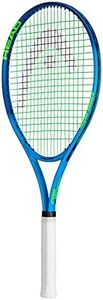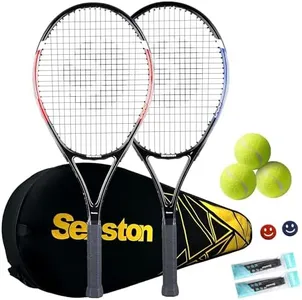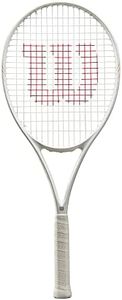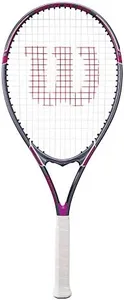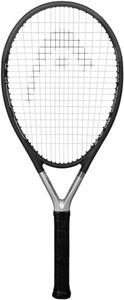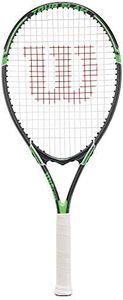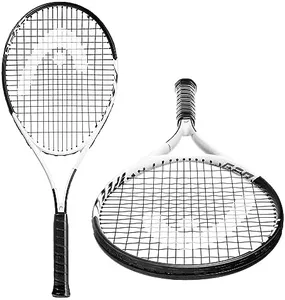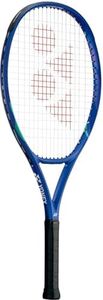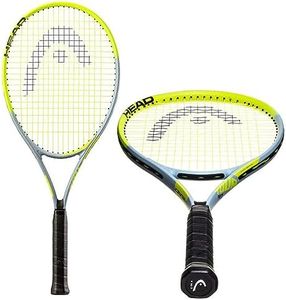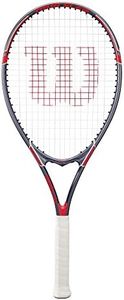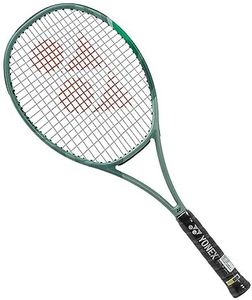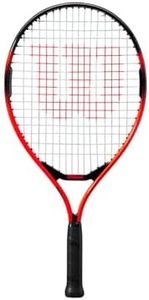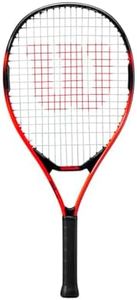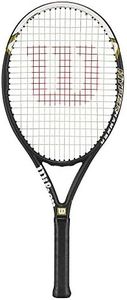We Use CookiesWe use cookies to enhance the security, performance,
functionality and for analytical and promotional activities. By continuing to browse this site you
are agreeing to our privacy policy
10 Best Light Tennis Racquets
From leading brands and best sellers available on the web.Buying Guide for the Best Light Tennis Racquets
Choosing a light tennis racquet can make playing the game more enjoyable, especially for beginners, juniors, or those who want extra maneuverability. Lighter racquets are generally easier to swing, reduce fatigue, and can help improve reaction times at the net. However, it’s important to pick the right combination of specs for your skill level and playing style to ensure control, power, and comfort.WeightThe weight of the racquet is a key factor because it affects how easy the racquet is to swing and how much power or stability you get. Generally, light racquets are considered those under 285 grams. Very light racquets (under 270g) are easy to handle and ideal for young players, beginners, or those with arm issues, but they can lack power and stability. Slightly heavier light racquets (270-285g) offer a balance between maneuverability and some added power or stability for intermediate players. When picking, consider your physical strength, skill level, and whether you prefer fast swings (go lighter) or more stability (choose the higher end of the light range).
BalanceBalance describes how the weight is distributed in the racquet. For light racquets, there are head-light, even, and head-heavy options. Head-light racquets are easier to maneuver and good for volleys, while head-heavy racquets provide more power in groundstrokes but might feel less quick at the net. Even-balance offers a middle ground. If you like to play at the net or have fast swings, head-light is better. If you need help generating power from the baseline, head-heavy could help, but always make sure it doesn't strain your arm.
Head SizeThe head size is important because it determines how large your sweet spot is and how much power and forgiveness you get. Light racquets often come with larger head sizes (over 100 square inches) to make hitting easier and to give you more power, especially if your swing is not very strong. Smaller head sizes (under 100 square inches) provide more control but require better timing. If you’re newer or want a forgiving racquet, opt for a bigger head size; if you’re accurate and want more control, slightly smaller heads are worth considering.
LengthLength of the racquet affects reach and leverage on shots. Most standard racquets are about 27 inches, and this length works well for most players. Some light racquets can be a bit longer (up to 27.5 inches), which gives extra reach and more power on serves, but can reduce maneuverability. If you are looking to improve net play and quick reactions, choose standard length; if you want extra reach on groundstrokes, you might experiment with a slightly longer racquet.
String PatternThe string pattern, often described as open (like 16x19) or dense (like 18x20), affects spin and control. Open string patterns allow for more spin and a bigger sweet spot, making it easier for beginners or those needing forgiveness. Dense patterns give more control and durability but less spin. If you’re just starting or want easier spin, go with a more open string pattern, while more advanced players looking for control may prefer the denser setup.
